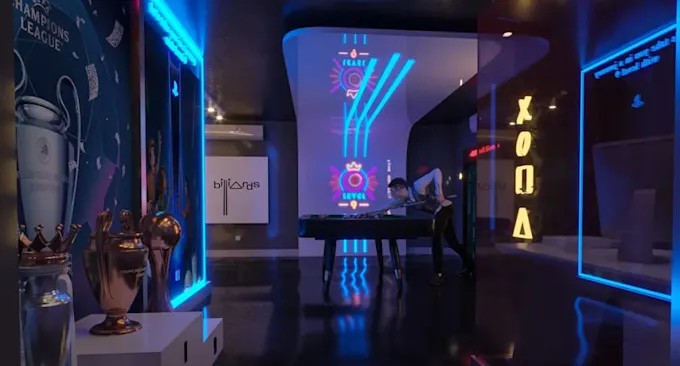The landscape of Video Games and Competitive Gaming has evolved from local arcade high scores into a multi-billion dollar industry driven by sophisticated technology. As we look toward the mid-2020s, the infrastructure supporting events like international championships has become a marvel of engineering. Whether it is a strategic turn-based battle in a beloved franchise or a high-octane firefight in FPS Games, the technology powering “Championship Sundays” is complex, robust, and constantly advancing. This article delves deep into the Gaming Tech ecosystem that makes global esports possible, exploring the hardware, network architecture, and broadcast innovations that define the modern era.
In the world of Gaming News, headlines often focus on the players or the prize pools. However, the unsung heroes are the Gaming PCs, optimized consoles, and low-latency networks that ensure competitive integrity. From the longevity of platforms like the Nintendo Switch to the raw power of next-gen PlayStation News and Xbox News cycles, understanding the technical backbone of these events provides a glimpse into the future of the Gaming Industry. This comprehensive analysis covers how Game Development, hardware specifications, and network engineering converge to create the ultimate stage for digital athletes.
Section 1: The Hardware Ecosystem – Consoles, PCs, and Performance Stability
The Longevity of Console Architectures
One of the most fascinating aspects of modern esports is the endurance of specific hardware platforms. In the realm of Nintendo News, we see a unique phenomenon where competitive communities sustain massive ecosystems on hardware that prioritizes accessibility and gameplay depth over raw graphical fidelity. By the time we reach milestones like 2026, platforms hosting titles like Pokémon or Super Smash Bros. rely heavily on software optimization rather than brute force processing.
For developers, this presents a unique challenge: squeezing every ounce of performance out of aging chipsets to maintain stable frame rates. In competitive play, a frame drop can mean the difference between victory and defeat. Game Design for these platforms often involves rigorous “frame pacing” techniques to ensure that even if the resolution is dynamic, the input latency remains consistent. This is critical in RPG Games and strategy titles where turn calculations and visual effects must synchronize perfectly across networked devices.
The Arms Race in PC Gaming Hardware
Contrastingly, the PC Gaming sphere is defined by a perpetual arms race. Esports News frequently highlights the adoption of the latest Graphics Cards from NVIDIA and AMD. For titles like Counter-Strike News, Valorant News, and Overwatch News, the standard has shifted from 144Hz to 360Hz and even 540Hz refresh rates.
The hardware stack for a professional PC tournament setup typically includes:
- Gaming Monitors: Panels utilizing TN or Fast-IPS technology to achieve sub-1ms Gray-to-Gray (GtG) response times. Motion blur reduction technologies (like ULMB 2) are essential to maintain visual clarity during rapid camera movements.
- Processors & GPUs: While AAA Games demand 4K resolution, competitive shooters run at 1080p (or lower) to maximize frames per second (FPS). The CPU becomes the bottleneck here, requiring high single-core clock speeds to feed data to the GPU fast enough to hit 500+ FPS.
- Thermal Management: Gaming PCs on tournament stages are often subjected to hot stage lights and enclosed booths. Advanced liquid cooling solutions are mandatory to prevent thermal throttling during marathon matches.
Section 2: Network Infrastructure and Competitive Integrity

The Science of the LAN Environment
While Cloud Gaming and online play have revolutionized accessibility, the gold standard for competition remains the Local Area Network (LAN). In high-stakes environments, such as the final showdowns of a major tournament, reliance on public internet infrastructure is a liability. Cybersecurity plays a massive role here; tournament organizers must deploy isolated networks to prevent Distributed Denial of Service (DDoS) attacks, which have historically plagued online qualifiers.
The technical setup for a major LAN involves enterprise-grade switching and routing gear. The goal is to achieve a “tick rate” that matches the server’s processing speed. For example, in Call of Duty News or Apex Legends News, the server tick rate determines how often the game state is updated. On a LAN, packets travel meters rather than miles, reducing ping to near-zero (often <5ms). This allows for “frame-perfect” inputs that are simply impossible in an online environment.
Game State Synchronization and Anti-Cheat Tech
Behind the scenes, Game Development engines—whether featured in Unity News or Unreal Engine News—must handle complex state synchronization. In MOBA Games like League of Legends News or Dota 2 News, the server is the authoritative source of truth. The client (the player’s PC) predicts movement to make the game feel responsive, but the server confirms it.
Furthermore, the integrity of the sport relies on invasive but necessary anti-cheat software. At the kernel level, these programs monitor memory addresses to ensure no external software is injecting code. In 2026 and beyond, we are seeing the rise of AI-driven anti-cheat systems that analyze player behavior patterns (mouse movement, reaction times) to detect anomalies that traditional signature-based detection might miss. This intersection of AI and Gaming Tech is the new frontier in preserving fair play.
Section 3: Broadcast Technology and Spectator Experience
AI and Automated Production
The way we consume Twitch News and YouTube Gaming content has changed drastically. Broadcasting a Battle Royale like Fortnite News involves tracking 100 players simultaneously. No human director can catch every elimination. This is where AI comes into play. Modern production suites use machine learning algorithms to predict where the action is about to happen based on player proximity and health status, automatically switching camera feeds to capture the critical moments.
Additionally, real-time data visualization is overlayed onto the stream. APIs pulled directly from the game client feed into graphics engines to display gold differentials, damage per second, and probability of victory percentages in real-time. This transforms Video Games into a data-rich spectator sport akin to Formula 1.
The Role of AR and VR
![Xfce desktop screenshot - xfce:4.12:getting-started [Xfce Docs]](https://arctiq.com/hs-fs/hubfs/hospitality%20gaming-900x525.jpg?width=640&name=hospitality%20gaming-900x525.jpg)
VR Gaming and AR Gaming are slowly bleeding into the broadcast sector. During opening ceremonies or halftime analyses, augmented reality characters (like a life-sized Pokémon or a League of Legends champion) are projected onto the stage for the live audience and viewers at home. This requires precise camera tracking and rendering power, often utilizing separate render clusters dedicated solely to the broadcast visual effects.
Section 4: Peripherals and Human-Computer Interaction (HCI)
When analyzing Gaming Peripherals, we enter the realm of ergonomics and millisecond precision. The equipment used by pros is vastly different from standard consumer electronics.
Input Devices: Keyboards, Mice, and Controllers
Gaming Keyboards have moved beyond standard mechanical switches to magnetic “Hall Effect” switches (like those found in Wooting or SteelSeries Apex Pro boards). These allow for “Rapid Trigger” functionality, where a key resets the moment it travels upward, allowing for faster key spamming—crucial in rhythm games or strafing in shooters.
Gaming Mice have become incredibly lightweight, often dropping below 50 grams, with sensors capable of 30,000 DPI and 8,000Hz polling rates. This high polling rate communicates with the PC 8,000 times per second, reducing input delay to micro-levels. Meanwhile, in the console space, custom Game Controllers with back paddles and adjustable trigger stops allow players to execute complex movement tech without taking their thumbs off the analog sticks.
Audio Engineering: Headsets and Isolation

Gaming Headsets on the main stage serve a dual purpose: precise audio delivery and extreme noise isolation. Players often wear in-ear monitors (IEMs) for game sound, covered by industrial-grade noise-canceling headsets playing “white noise.” This prevents them from hearing the commentators or the crowd, which could reveal enemy positions (a phenomenon known as “ghosting”). The audio mix itself is often EQ-tuned to highlight specific frequencies, such as footsteps or reload sounds, giving players a tactical advantage.
Implications and Future Trends
As we look at the trajectory of Gaming Tech, several key trends emerge that will define the next decade of Game Releases and competition:
- Cross-Platform Standardization: With games like Minecraft News and modern shooters supporting cross-play, tournament organizers must standardize input latency across different platforms to ensure fairness.
- Mobile Esports Dominance: Mobile Gaming is no longer casual. With chips like the Snapdragon 8 Gen series and Apple’s A-series silicon, mobile devices can run 120FPS competitive titles. We are seeing a surge in mobile-first tournaments in regions like Latin America and Southeast Asia.
- Sustainability in Tech: As hardware becomes more powerful, energy consumption rises. The Gaming Industry is facing pressure to create more energy-efficient Gaming Consoles and server farms to reduce the carbon footprint of massive digital events.
- Retro Preservation: Retro Gaming and Game Emulation are becoming vital for keeping the history of esports alive. As older hardware fails, highly accurate FPGA-based emulation is necessary to run tournaments for classic titles like Super Smash Bros. Melee or classic Tetris.
Conclusion
The excitement of a “Championship Sunday” is the culmination of years of training for players, but it is also a triumph of engineering. From the Indie Games scene to massive AAA Games productions, the technology underpinning competitive gaming is a complex tapestry of optimized code, high-performance silicon, and resilient network architecture.
Whether it is the endurance of handheld hybrids in the Nintendo ecosystem or the raw power of Gaming Laptops and desktops driving the latest simulators, the tech is what makes the magic possible. As we move further into the latter half of the 2020s, the convergence of AI, cloud computing, and advanced hardware will continue to blur the line between physical sports and digital competition, creating experiences that are more immersive, accessible, and exciting than ever before.










